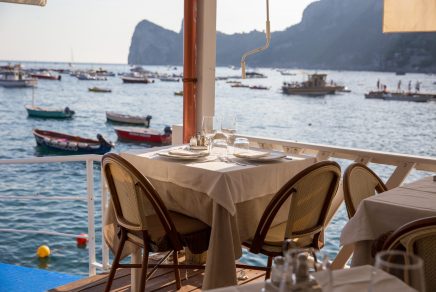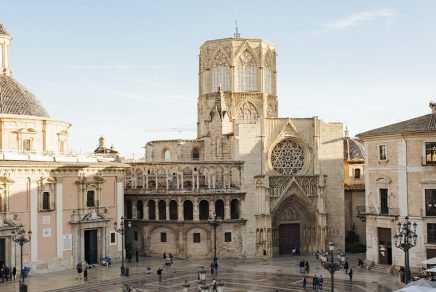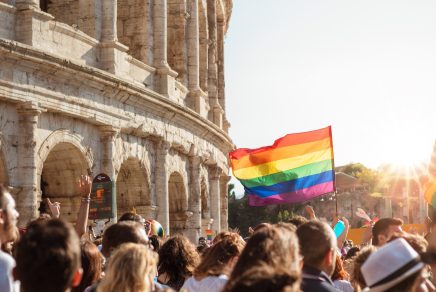Share the article
Spain, the land of flamenco and tapas, is today the third most popular travel destination in Europe. From its sun drenched Mediterranean coastline to the fairy tale castles of Segovia in the north, this federation of distinct regions, each with its own unique culture and geography, attracts millions of visitors each year. They come for the sun, the beaches, the gastronomy and the rich Iberian culture dating back to Roman times. And they discover a cosmopolitan, sophisticated and welcoming society. It wasn’t always this way.
After the end of the Spanish Civil War in 1939, Spain entered a period of relative international isolation that lasted for decades. Its supreme and absolute leader, General Francisco Franco, ruled with an iron fist until the mid 1970s, brutally suppressing any dissent to his conservative, Catholic and authoritarian regime. Franco’s insular, paranoid and intolerant attitude toward the outside world persisted, despite the economic, political and sociological hardships it produced. Modernization, urbanization and increased mobility were seen as corrupting influences on a country that he and his followers wanted to keep as rural and traditionally Andalusian as possible.
Bikini Breakthrough
But even El Caudillo, as the infamous generalissimo was called, could not completely halt the masses of British and other western European tourists that began to arrive in Spain in the 1950s, when higher standards of living, more discretionary income and more accessible travel options became increasingly available. “Spain is different” promised early tourist brochures, designed to lure curious foreign visitors to this land apart. Then, in 1959, an extraordinary event happened that came to symbolize more than anything the beginning of Spain’s tourism boom.
In Benidorm, on the country’s eastern coast, the mayor, Pedro Zaragoza, sanctioned the wearing of bikinis on the town’s beaches for the first time, ordering the local authorities to stop insisting that tourists caught wearing revealing swimwear “cover up.” In response, the outraged archbishop began excommunication proceedings against the maverick Zaragoza.
Undeterred, the mayor travelled to Madrid and secured an audience with Franco himself, eventually convincing Spain’s arch conservative dictator that the economic rewards of tourism outweighed its “morally corrupting” effects. Spain’s tourism boom was born, and the country never looked back. Tourists brought more than money; they arrived with democratic ideas, more liberal attitudes and cosmopolitan values that would completely transform Spain during the coming decades.
In 1959, in Benidorm, the mayor sanctioned the wearing of bikinis on the town’s beaches for the first time
Foreign Invasion
North American tourists, in particular, were prized by Franco’s government, which courted relationships with travel industry heavyweights like TWA, Hilton and American Express, as well as influential journalists and filmmakers. As an economic growth strategy, luring the world’s richest tourists was a master stroke for Franco. But they came sowing the seeds of change that would eventually grow into the roots of a healthy Spanish democracy.
During the final decade and a half of Franco’s rule, Spain experienced an unprecedented tourism boom, along with a corresponding social transformation from a conservative, mainly rural country to a more urbanized, tolerant one. Increased tourism brought about many positive changes in the role of women, gay and lesbian rights and even the contemporary art world in Spain. Far from being limited to bullfighting, flamenco, Don Juan or Carmen, Spanish culture exploded onto the international scene.
By the time Franco died in November 1975 and the monarchy was fully restored under King Juan Carlos, the hermetically sealed state apparatus that Franco had so fanatically constructed in his fascist image was well on its way to morphing into one of Europe’s greatest success stories. The so called Spanish Miracle of the 1960s had already lifted much of the country out of poverty. Soon, hordes of British, German, Swedish, French and other northern European holiday makers were turning Spain’s sun baked costas Dorada, del Azahar, Cálida, Tropical, Blanca, de Almería, del Sol into the continent’s most popular resort destinations. Many older foreigners settled here permanently, snapping up so many cheaply priced seaside retirement villas that the Spanish started to snidely refer to the region as the costa geriátrica (geriatric coast).
Now, Barcelona is one of Europe’s coolest destinations.
Modern Revival
The democratic socialist governments of the 1980s further integrated Spain into the European travel network, diversifying its tourist attractions and developing more art galleries, museums, monuments and national parks, while still promoting the country’s magnificent beaches as its single largest draw. Its real coming out party was hosting the 1982 FIFA World Cup, which drew tens of thousands of rabid foreign football fans to cities and stadiums throughout the country. Then, in 1992, Barcelona welcomed the world to the Summer Olympics, which transformed this once shabby port city into a major tourist destination, complete with kilometers of artificial beaches constructed for the Games. Now, Barcelona is one of Europe’s coolest destinations, with a culinary and nightlife scene rivaling that of any other country in the Old Continent.
In 1960, Spain welcomed six million visitors. By 2007, that number had skyrocketed to 60 million more than its entire population making it the third most visited country in the world. Many tourists still prefer to spend their holidays along the Mediterranean coasts, in fishing villages whose marinas full of expensive yachts now draw masses of pleasure seekers. Others prefer to explore Spain’s medieval towns and historic cities, as well as rural areas and rugged mountains.
More gems await curious and adventurous travellers in every one of this amazing country’s 53 provinces and 17 autonomous regions. Four decades after Franco, his despotic dream has been replaced by democracy and a collective determination to celebrate the spirit of the Spanish people by inviting the world to come share its beauty and exuberance. But how ironic that, in this proud land once synonymous with macho bullfights, the liberation of the Spanish people began with a fight to introduce the humble bikini.







